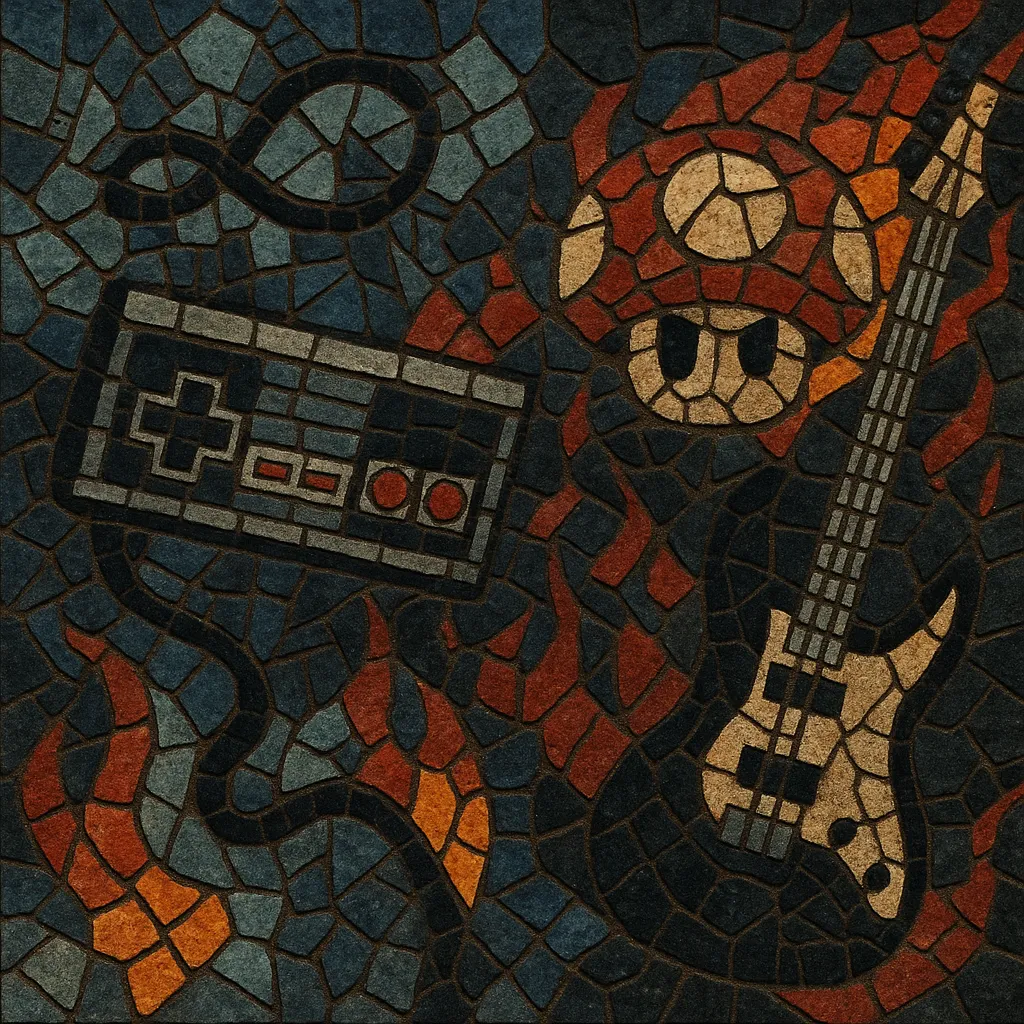
Nintendocore is a fusion of chiptune/video‑game aesthetics with the aggression and structures of hardcore, metalcore, and related heavy styles. It pairs 8‑bit timbres reminiscent of NES and Game Boy sound chips with distorted guitars, screamed or shouted vocals, breakdowns, and high‑energy drumming.
Typical sonic markers include square‑wave leads, triangle‑wave bass lines, noise‑channel snares and hi‑hats, rapid arpeggios, and modal melodies that evoke classic game soundtracks. These are integrated into punk/metal frameworks featuring blast beats, mathy syncopations, and dynamic stop‑starts. While some bands directly quote game themes, many write original material that channels the same nostalgic, pixelated character.
Culturally, the genre emerged from early‑2000s internet communities and DIY scenes (forums, MySpace, netlabels) where hardware hacking, tracker composition, and hardcore touring circuits overlapped.
Nintendocore took shape in the United States in the early 2000s as musicians steeped in hardcore punk and metalcore began folding in chiptune techniques and game‑music motifs. The widespread availability of trackers (e.g., Famitracker, LSDJ) and soft‑synth emulations of NES/Game Boy chips enabled guitar‑centric bands to add authentic 8‑bit colors. HORSE the Band popularized the term “nintendocore,” while contemporaries like The Advantage, Minibosses, and The NESkimos demonstrated rock/metal approaches to game‑music vocabulary.
Message boards, MySpace, and small labels helped the sound spread across North America and parts of Europe. Tours and tongue‑in‑cheek aesthetics (pixel art, retro consoles on stage) amplified the scene’s identity. Releases in the mid‑to‑late 2000s codified the blend of breakdowns, mathy riffs, and chip leads, and live rigs often combined traditional backline with laptops, Game Boys, or MIDI controllers.
In the 2010s, nintendocore’s techniques filtered into adjacent styles—electronicore, cyber‑leaning metal, and chiptune‑rock—while a nostalgia wave brought renewed attention through streaming platforms and gaming culture. Some groups leaned pop‑punk or indie, others veered heavier or more experimental, but the core aesthetic—8‑bit timbres fused with high‑impact punk/metal energy—remains a recognizable niche with periodic revivals.

